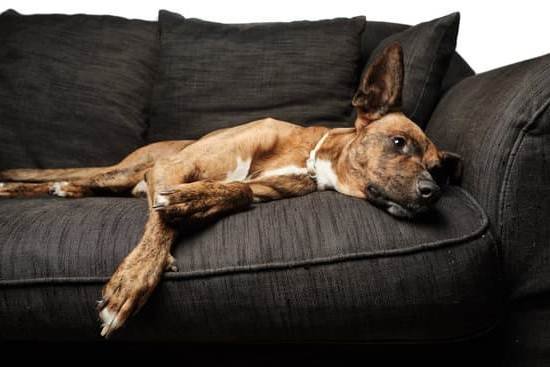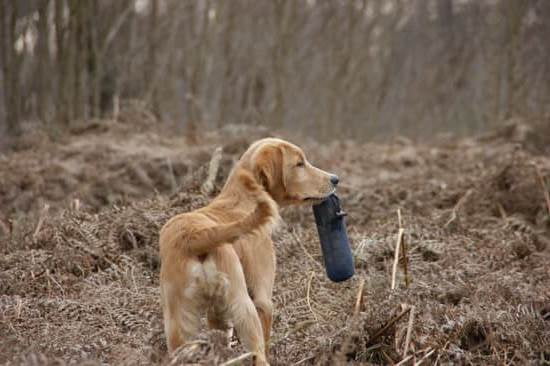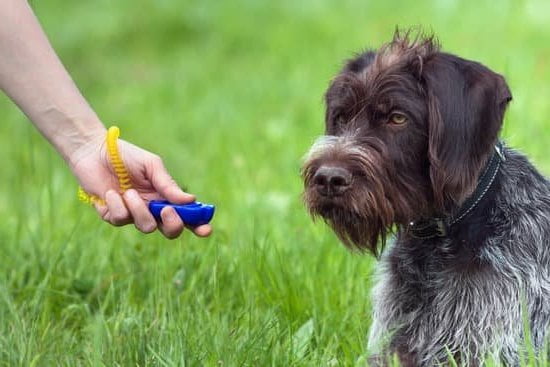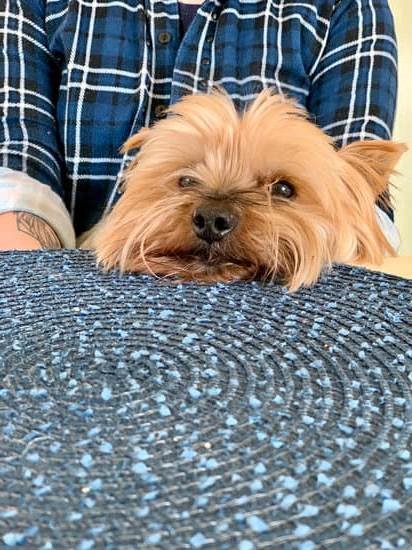Dogs can be house-trained at any age, but it may take a little more time and patience to train an older dog. One way to make house-training easier for an older dog is to use a pee pad.
To train an older dog to use a pee pad, start by putting the pee pad in a quiet, accessible place in your home. Next, encourage your dog to use the pee pad by praising them when they pee on the pad. If your dog has an accident outside of the pee pad, do not punish them; simply clean up the mess and continue to encourage them to use the pee pad.
It may take a little time, but with patience and persistence, you can train your older dog to use a pee pad.
How To Train Dog Not To Pee On Furniture
It’s no secret that dogs can be messy. They often have accidents in the house, and one of the most common spots for them to pee is on furniture. If you have a dog that is peeing on your furniture, it can be frustrating and difficult to train them to stop. However, with a little patience and effort, it is possible to train your dog not to pee on furniture.
The first step in training your dog not to pee on furniture is to determine why they are doing it. There are a number of reasons why a dog might start peeing on furniture, and it is important to address the underlying cause before you can successfully train them not to do it. Common reasons for dogs peeing on furniture include:
– They are not getting enough exercise and are relieving themselves out of boredom.
– They are not being properly house-trained and are peeing wherever they can.
– They are marking their territory.
– They are experiencing anxiety or stress.
– They are sick or have a medical condition that is causing them to have accidents.
Once you have determined the reason why your dog is peeing on furniture, you can start working on training them not to do it. The methods that you use will vary depending on the reason why your dog is peeing on furniture, but the basic approach is the same. You will need to be patient and consistent, and be prepared to spend some time training your dog.
If your dog is not getting enough exercise, you will need to increase their physical activity. Taking them on more walks or playing with them in the yard are good ways to get them moving. If your dog is not being properly house-trained, you will need to start working on teaching them where to pee and how to hold it. If your dog is marking their territory, you will need to start neutering them or spaying them, if they are not already. If your dog is experiencing anxiety or stress, you will need to work on alleviating those feelings. And if your dog is sick or has a medical condition, you will need to take them to the vet for treatment.
Once you have addressed the underlying cause of your dog’s peeing on furniture, you can start training them not to do it. The basic approach is to place your dog in a situation where they are likely to pee on furniture and then praise them when they do not. For example, if your dog is peeing on the couch, put them on the couch and praise them when they do not pee. If your dog is peeing on your bed, put them in bed and praise them when they do not pee. Be sure to provide plenty of positive reinforcement when your dog does not pee on furniture, as it will help them to learn the desired behavior.
It will likely take some time for your dog to learn not to pee on furniture, but with patience and consistent effort, it is possible to train them not to do it. With a little effort and some time, you can have a dog that does not pee on furniture, and you can once again enjoy having a clean and mess-free home.
Why Would A Potty Trained Dog Pee In The House
?
There can be a number of reasons why a potty trained dog might pee in the house, even after seeming to have mastered the art of going outside. Perhaps the dog is sick and doesn’t feel well enough to walk to the bathroom. Maybe he’s been crated for too long and has developed a bladder infection as a result. Or it could be that something has changed in the home environment, such as a new baby or pet, and the dog is trying to reassert his dominance in the pack.
Whatever the reason, it’s important to address the problem as soon as possible. Dogs who pee in the house can quickly develop bad habits, and may start refusing to go outside altogether. If you’re not sure why your dog is having accidents, it’s best to take him to the vet for a check-up. Once you’ve determined the root of the problem, you can start working on a solution.
In most cases, it’s simply a matter of training the dog to pee in a specific spot in the house. This can be a challenge, but with patience and consistency it can be done. Some owners find it helpful to place a pee pad in the designated spot, and reward the dog when he uses it. Others prefer to use verbal cues and positive reinforcement, such as treats or praise. Whichever method you choose, be sure to stick to it and be patient; it may take a few weeks for the dog to get the hang of it.
If your dog is having accidents because of a medical condition, treating the illness will usually take care of the problem. In some cases, however, you may need to take additional steps to keep the dog from peeing in the house. This could involve using a crate, putting the dog on a schedule, or using special training pads. Whatever the solution, it’s important to be consistent and patient so that the dog can learn to pee in the right place.
How Do You Train Your Dog To Pee Outside
?
When it comes to housebreaking your dog, one of the most important things to remember is to praise them when they pee outside. This positive reinforcement will help your dog to associate going to the bathroom outside with good things, making it more likely that they will do it again in the future.
One way to help your dog get used to peeing outside is to take them for walks regularly, and to give them plenty of opportunities to pee when they’re out. When they finally do pee outside, be sure to praise them enthusiastically and give them a treat.
If your dog has an accident in the house, don’t punish them. Instead, clean up the mess and try to be more vigilant in watching them in the future. Dogs are more likely to pee in the same spot if they’re scolded or punished for it, so it’s important to stay calm and patient when housebreaking your pet.
Dog Peeing In House When Potty Trained
There are a few things to consider when your dog is peeing in the house even though they are potty trained. The first thing to look at is whether there is an underlying medical condition causing the housepeeing. A few common medical conditions that can cause dogs to urinate in the house are:
– Urinary tract infection (UTI)
– Diabetes
– Kidney disease
– Cushing’s disease
If you rule out any underlying medical conditions, then you need to look at your dog’s potty training routine. Dogs that are properly potty trained will usually have a consistent routine for going potty. If your dog is not following their usual potty routine, then they may be getting confused and peeing in the house as a result. Other things to consider include:
– Are you taking your dog out often enough?
– Is your dog getting enough exercise?
– Is your dog being left alone for too long?
– Is your dog being rewarded enough for going potty outside?
If you’ve ruled out any medical conditions and your dog is not following their usual potty routine, then you may need to go back to basics with their potty training. Try taking them out more often, rewarding them more for going potty outside, and making sure they get enough exercise.

Welcome to the blog! I am a professional dog trainer and have been working with dogs for many years. In this blog, I will be discussing various topics related to dog training, including tips, tricks, and advice. I hope you find this information helpful and informative. Thanks for reading!





